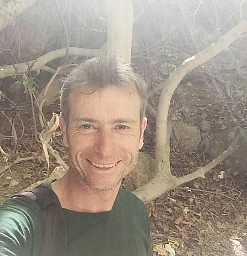To the conquest, a short history of progress (Swiss Stories 2013, by Christophe Chammartin) - Swiss Press Award

Oui
Christophe Chammartin
To the Conquest, a Short History of Progress With its enlargement to Central and Southeastern Europe, European Union agriculture has significantly strengthened its production potential. Some of the new Member States join the Union with a deep agricultural tradition, which translates into new land, animal numbers, and a significant agricultural population. Romania has a population of 22 million, 30% of whom, approximately 7 million, are farmers. France has 3.4% farmers, and the United Kingdom 1.4%. It is certain that the agricultural population of the new Member States will decrease, in parallel with the increase in the competitiveness of agriculture. But what is actually happening to the lives of these people? Starting in September 2010, I set off on the roads of Europe to understand how Romanian farmers experience their new reality. This report presents different types of agricultural workers living in Transylvania, in the heart of Romania. Peasant self-sufficiency is widespread in the Romanian countryside, where approximately 10% of the European Union's agricultural population lives day to day. Romanian subsistence farmers are forced into competition with agro-industrial companies from the West. Benefiting from easier access to European agricultural funds as well as bank capital contracted in their own country, foreign companies do not play in the same league as the Romanians. It is first in Zagon, a town of 5,000 inhabitants located in Transylvania at the foot of the Romanian Carpathians, that I share for several weeks the reality of a peasant couple living on fragmented plots of barely two hectares in total. Rémi and Maria have decided to stay on their land. They combine subsistence farming with several odd jobs such as butcher, undertaker, dealer, and police auxiliary. They also rely on a village community in which barter and the exchange of services are widely practiced. Due to the size of their land, without access to running water, or of course, the internet, the couple remains far removed from European subsidies. A few kilometers away, I meet Georghe, a farmer and incidentally gas dealer in Valea Mare. His family is preparing for his departure. Recruited through an obscure network of intermediaries, the man doesn't know exactly where in Germany he's going to work... On the morning of July 8, 2011, dozens of buses from all over Romania meet at the border. Each passenger has taken 100 euros with them to pay for their ticket. Georghe's name is on a list, destination Karlsruhe. After a thirty-six-hour journey, the bus will drop us off directly at the gates of an industrial market gardening company in Baden-Württemberg. In Romania, 350,000 children live without one or both parents, who have gone abroad for economic reasons. Finally, it was in the town of Nochrich near Sibiu that I followed Samuel and Stefan, two young Swiss butchers from Toggenburg. Having settled in Transylvania for three years to make their fortune in organic beef, they founded their company, Karpaten Meat. With the financial support of a consortium specializing in ecological agro-industrial investments, they were able to acquire more than 1,000 hectares. Thanks to numerous partners, they manage a farm of nearly 4,000 hectares. Their herd currently numbers a thousand cows, expected to double quickly. They buy their Scottish cows in Baden-Württemberg in southern Germany. Their board of directors is located in Zurich, Switzerland. Transylvania carries a large number of legendary images in the collective unconscious. The wolf and the bear are present even in the cities. The desire to immerse myself in these myths and soak them up determined the location of this work. I approached this medium-format color reportage in a poetic way to convey the particular emotion inspired by the Transylvanian autumn forests. By using old negative films, I rediscover the pastel hues of Romanian nostalgia that I shared throughout this work. Through this socio-poetic reportage, I offer the viewer an exhibition of 35 images. A space for reflection and introspection outside the usual schema of current events. Romania's most important socio-economic sector is changing rapidly. Each passing day reveals a little more of the fragility of European agricultural policy. It is time to redefine the axes of a productivist agricultural policy implemented following the shortcomings of the Second World War. Our food remains, more than ever, a fundamental responsibility of society, and of each individual.
